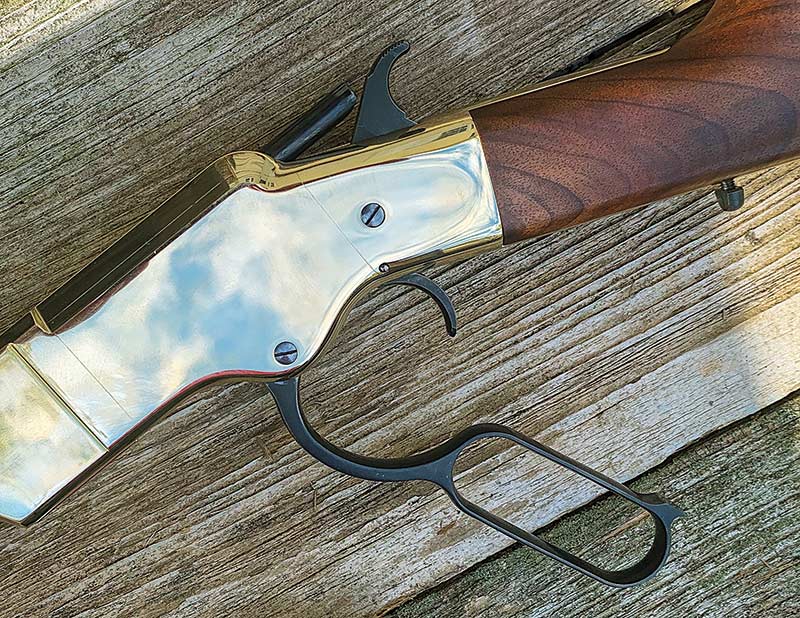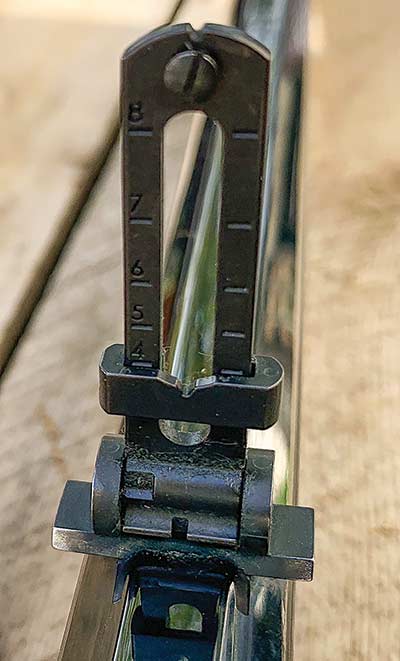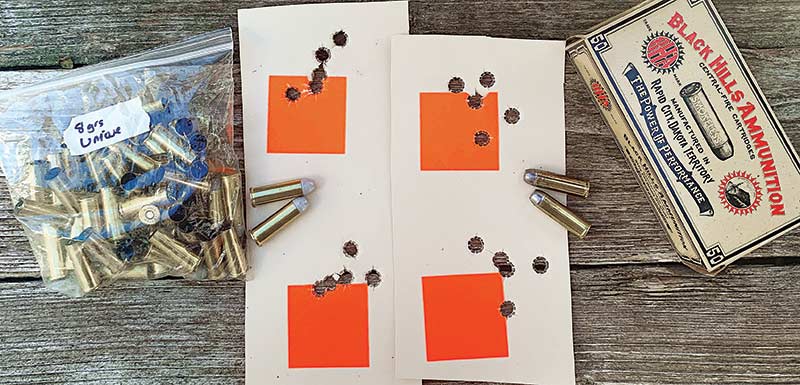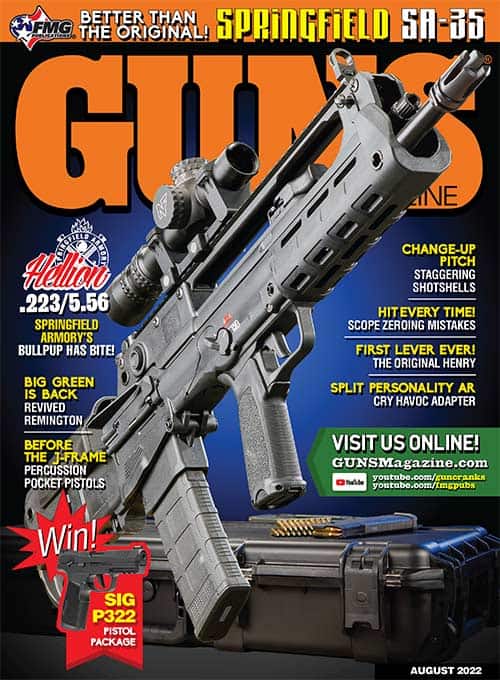The New Original Henry
America's First Successful Lever-Gun Renewed
Nothing’s more American than lever-action rifles. The pride and romance associated with them is legendary. Even to this day, they’re revered for their reliability, fast follow-up shots, power and just plain fun. Riflemen cannot contain their smiles when seeing one, let alone control their impulse of picking it up and working the lever. Transported, while magically levering a round in the chamber, brings back a flood of great memories both lived and dreamed.
Benjamin Tyler Henry
Lever gun enthusiasts can thank Benjamin Tyler Henry for these wonderful repeaters. It was Mr. Henry who conceived the first successful lever-action repeating rifle. He patented it in 1860 and the New Haven Arms Company produced it. The repeater changed the way wars were fought by providing one man, armed with a Henry rifle, the firepower of a small platoon. Henry rifles first saw battle in the Civil War in mid-1862 with Union troops.
Confederate Colonel John Mosby is credited with the infamous saying of the Henry’s firepower — “that damned Yankee rifle that can be loaded on Sunday and fired all week.” The Henry rifle continued as a dominating force for settlers heading west during the frontier days of America.
Henry Today
About 15 years ago, I was finishing up lunch while watching the Outdoor channel. As I was putting my boots on, an info commercial started playing. The voice was full of passion and sincerity, with a Brooklyn accent. Captivated, I continued listening.
Mesmerized, I wanted to buy every rifle being talked about having walnut from Missouri, castings from Ohio and built in America, emphasizing, “made in America or not made at all!” Who is this guy? I was really excited. Of course, the voice belonged to none other than Anthony Imperato, president of Henry Rifles.
Henry Repeating Arms took its name from Benjamin Henry when Louis Imperato and his son Anthony opened shop in Brooklyn, NY in 1996. The first product shipped in March of 1997 was the Henry classic .22 (H001). There is no other affiliation or lineage to Benjamin Tyler Henry.
Raton, NM Territory
You never know who you’ll bump into at the NRA’s Whittington Center. First, I spot Andy Larsson, head honcho of Skinner Sights. Wherever Andy travels, you can be sure he leaves a wake of lever guns nearby sporting his exceptional sights. Next to Andy was Tom Kotz, product manager of Henry. Talk about being in lever gun Looney Land! Tom brought plenty of samples, complete with ammo. The first rifle I tried was one of Henry’s new side-loading levers, this one in .38-55. I have a thing for cartridges with dashes in their name.
After hitting steel at 400 yards, I was ready to try something else and I knew exactly what it was. You see, Henry resurrected the original Henry rifle of 1860 fame in April of 2014. However, these guns are chambered in .44-40 and .45 Colt as the original chambering. The .44 Rimfire is long discontinued.
Tom showed me how to load the 1860 and it was back to the steel silhouettes. Accuracy was impressive and I was duly impressed with the quality of the “Original Henry,” the gun that started it all for lever gun lovers. Tom and I conspired as I ordered one to test and evaluate shortly after getting home.
Unboxing
When unboxing the Henry 1860, you’ll be bedazzled by the highly polished brass frame and impeccably deep-blued, one-piece barrel and magazine. I was! That’s right — the barrel and magazine are machined from one piece of steel. It’s screwed onto the hardened brass receiver, which has the same tensile strength as steel.
The 1860 is fitted with fancy-grade American Walnut stocks. As you can see, my test gun has exceptional figure. The classic folding-ladder rear sight and brass blade front provide a wonderful sight picture. Using the ladder sight is fun and an accurate way of shooting long distances.
Best of all, the 1860 uses a traditional half-cock safety hammer notch. There are no modernized manual safeties, just like the good ol’ days when people were responsible and held accountable for their actions. Both calibers have a 24.5″ barrel with a 13-round capacity. Weight is 9 lbs., overall length 43″ and LOP 14″. The brass buttstock has a traditional trapdoor for cleaning rod storage.
Load & Shoot
Loading the 1860 is pretty cool, since there’s no side-loading gate. The magazine has a brass follower tab, which rests against the frame of the gun when empty. To load, you need to push the follower tab all the way to the top of the magazine, until the follower clears the pivot point of the barrel/magazine. When it does, twist the top 5″ clockwise. This exposes the magazine tube for loading.
With muzzle pointed up around 40 degrees, start loading cartridges. The shallow angle keeps cartridges from slamming into one another. When loaded, twist the top 5″ of the barrel back and slowly let the follower down. Your magazine is now loaded. Sure, it’s not nearly as fast as a side loading gate, but it is still fun to load the original lever gun like our forefathers did!
Ammo
Luckily, I had some Black Hills .44-40 ammo left over from a previous review. Consisting of a 200-grain cast lead slug of radius flat-nose design, loaded in Starline brass, it’s packaged in an authentic looking, period-correct box. Still suffering from the great ammo drought of 2020-21, my only other course of action was to use handloads.
Using a Lee six-cavity 200-grain radiused flat-nose mold, I size them 0.430″. It’s been my experience cast bullets sized 0.430″ shoot best in modern .44-40 guns. I load them over 8 grains of Unique in Starline brass with CCI 300 large pistol primers for ignition.
Shootin’
Shooting was done at 50 yards. I used U-line 2″ fluorescent orange squares as targets. Using a 6″x6″ carpeted block of wood, with a sandbag on top, I was sitting pretty, stability-wise. The 1860 provides plenty of sight radius with its 24.5″ barrel, making accuracy a breeze. The Black Hills ammo consistently grouped into 2″, or as well as I could hold at the distance.
My handloads were a tad tighter and I give credit to the 0.430″ powder-coated and sized slugs. Function was smooth and flawless if you just remember the follower tab moving toward you after cycling the lever. I caught myself a few times dry-stroking the lever when the follower was blocked by the sandbag.
This can be both a good and bad trait. Bad in that you need to move your support hand while firing numerous rounds, good in that you have a reminder of approximately how many rounds you have left when the tab hits your hand. The open magazine seam allows you to visually check round count, but also allows dust/dirt to enter the magazine. Trigger pull was smooth, breaking just over 4 lbs.
Summation
It was a natural for Henry to resurrect the Original Henry Rifle, the lever that started it all. Like all Henry rifles, it’s made entirely on U.S. soil, just as B.T. Henry did. The Henry Original duplicates the 1860 pattern and patents and is virtually identical, besides being chambered for the .44-40 and .45 Colt.
Considering Civil War-era Henry rifles sell for up to $250,000 at auction, Henry provides you an affordable means to own, shoot and display the “original” lever gun. This rifle started it all for us lever gun lovers and is one of the most important rifles ever made in my opinion.
MSRP: $2,720









